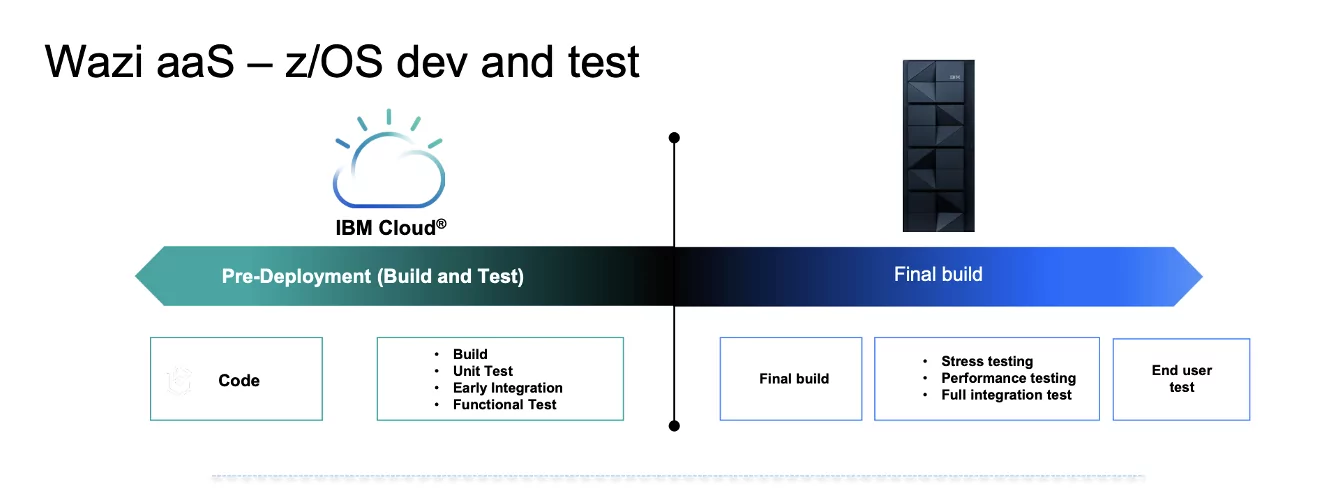
In today’s hyper-competitive digital landscape, the rapid development of new digital services is essential for staying ahead of the curve. However, many organizations face significant challenges when it comes to integrating their core systems, including Mainframe applications, with modern technologies. This integration is crucial for modernizing core enterprise applications on hybrid cloud platforms. Shockingly, a staggering 33% of developers lack the necessary skills or resources, hindering their productivity in delivering products and services. Moreover, 36% of developers struggle with the collaboration between development and IT Operations, leading to inefficiencies in the development pipeline. To compound these issues, repeated surveys highlight “testing” as the primary area causing delays in project timelines. Companies like State Farm and BNP Paribas are taking steps to standardize development tools and approaches across their platforms to overcome these challenges and drive transformation in their business processes.
How does Wazi as Service help drive modernization?

One solution that is making waves in this landscape is “Wazi as a Service.” This cloud-native development and testing environment for z/OS applications is revolutionizing the modernization process by enabling secure DevSecOps practices. With flexible consumption-based pricing, it provides on-demand access to z/OS systems, dramatically improving developer productivity by accelerating release cycles on secure, regulated hybrid cloud environments like IBM Cloud Framework for Financial Services (FS Cloud). Shift-left coding practices allow testing to begin as early as the code-writing stage, enhancing software quality. The platform can be automated through a standardized framework validated for Financial Services, leveraging the IBM Cloud Security and Compliance Center service (SCC). Innovating at scale is made possible with IBM Z modernization tools like Wazi Image Builder, Wazi Dev Spaces on OpenShift, CI/CD pipelines, z/OS Connect for APIs, zDIH for data integrations, and IBM Watson for generative AI.
What are the benefits of Wazi as a service on IBM Cloud?
Wazi as a Service operates on IBM LinuxONE, an enterprise-grade Linux server, providing a substantial speed advantage over emulated x86 machine environments. This unique feature makes it 15 times faster, ensuring swift and efficient application development. Furthermore, Wazi bridges the gap between developer experiences on distributed and mainframe platforms, facilitating the development of hybrid applications containing z/OS components. It combines the power of the z-Mod stack with secure DevOps practices, creating a seamless and efficient development process. The service also allows for easy scalability through automation, reducing support and maintenance overhead, and can be securely deployed on IBM FS Cloud, which comes with integrated security and compliance features. This means developers can build and deploy their environments and code with industry-grade regulations in mind, ensuring data security and regulatory compliance.
Additionally, Wazi VSI on VPC infrastructure within IBM FS Cloud establishes an isolated network, fortifying the cloud infrastructure’s perimeter against security threats. Furthermore, IBM Cloud services and ISVs validated for financial services come with robust security and compliance controls, enabling secure integration of on-prem core Mainframe applications with cloud services like API Connect, Event Streams, Code Engine, and HPCS encryptions. This transformation paves the way for centralized core systems to evolve into modernized, distributed solutions, keeping businesses agile and competitive in today’s digital landscape. Overall, Wazi as a Service is a game-changer in accelerating digital transformation while ensuring security, compliance, and seamless integration between legacy and modern technologies.
How IBM Cloud Financial Service Framework help in industry solutions?
The IBM Cloud Framework for Financial Services a.k.a IBM FS Cloud is a robust solution designed specifically to cater to the unique needs of financial institutions, ensuring regulatory compliance, top-notch security, and resiliency both during the initial deployment phase and in ongoing operations. This framework simplifies interactions between financial institutions and ecosystem partners that provide software or SaaS applications by establishing a set of requirements that all parties must meet. The key components of this framework include a comprehensive set of control requirements, which encompass security and regulatory compliance obligations, as well as cloud best practices. These best practices involve a shared responsibility model that applies to financial institutions, application providers, and IBM Cloud, ensuring that everyone plays a part in maintaining a secure and compliant environment.
Additionally, the IBM Cloud Framework for Financial Services provides detailed control-by-control guidance for implementation and offers supporting evidence to help financial institutions meet the rigorous security and regulatory requirements of the financial industry. To further facilitate compliance, reference architectures are provided to assist in the implementation of control requirements. These architectures can be deployed as infrastructure as code, streamlining the deployment and configuration process. IBM also offers a range of tools and services, such as the IBM Cloud Security and Compliance Center, to empower stakeholders to monitor compliance, address issues, and generate evidence of compliance efficiently. Furthermore, the framework is subject to ongoing governance, ensuring that it remains up-to-date and aligned with new and evolving regulations, as well as the changing needs of banks and public cloud environments. In essence, the IBM Cloud Framework for Financial Services is a comprehensive solution that empowers financial institutions to operate securely and in compliance with industry regulations, while also streamlining their interactions with ecosystem partners.
Get to know Wazi as a Service
Operating on the robust IBM LinuxONE infrastructure, Wazi as a Service bridges the gap between distributed and mainframe platforms, enabling seamless hybrid application development. The platform’s scalability, automation, and compliance features empower developers to navigate the intricate web of regulations and security, paving the way for businesses to thrive in the digital era. With Wazi, businesses can securely integrate on-premises core systems with cutting-edge cloud services, propelling them into the future of modernized, distributed solutions. In summary, Wazi as a Service exemplifies the transformative potential of technology in accelerating digital transformation, underlining its importance in achieving security, compliance, and the harmonious coexistence of legacy and modern technologies.
More from Cloud

November 13, 2023
Top 6 Kubernetes use cases
5 min read – Kubernetes, the world’s most popular open-source container orchestration platform, is considered a major milestone in the history of cloud-native technologies. Developed internally at Google and released to the public in 2014, Kubernetes has enabled organizations to move away from traditional IT infrastructure and toward the automation of operational tasks tied to the deployment, scaling and managing of containerized applications (or microservices). While Kubernetes has become the de facto standard for container management, many companies also use the technology for a…

November 13, 2023
NVMe vs. M.2: What’s the difference?
7 min read – Over the last decade, solid-state drives (SSDs) have become the top choice for many compute environments because of their better read/write speeds and lack of moving parts when compared to hard disk drives (HDDs). However, with many options to choose from, finding the right fit for your needs can be challenging. In this post, we’re going to look at one of the most widely used types of SSD, the M.2, and the most popular (and fastest) protocol available for connecting…

November 13, 2023
IBM Tech Now: November 13, 2023
< 1 min read – Welcome IBM Tech Now, our video web series featuring the latest and greatest news and announcements in the world of technology. Make sure you subscribe to our YouTube channel to be notified every time a new IBM Tech Now video is published. IBM Tech Now: Episode 89 On this episode, we’re covering the following topics: AI vs. human deceit: Unravelling the new age of phishing tactics IBM MQ version 9.3.4 17 IBM offerings have secured a placement on the TrustRadius…

November 10, 2023
How the semiconductor industry is leveraging high-performance computing to drive innovation
3 min read – Semiconductors act as the secret powerhouse behind various industries, from healthcare to manufacturing to financial services. In the last few years alone, we’ve seen how essential semiconductors can be and why companies need to develop this technology rapidly to maximize productivity. As semiconductor manufacturers strive to keep up with customer expectations, electronic design automation (EDA) tools are the keys to unlocking the solution. However, to truly drive innovation at scale, EDA leaders need massive computing power. As the need…
IBM Newsletters
Get our newsletters and topic updates that deliver the latest thought leadership and insights on emerging trends.
Subscribe now More newsletters
- SEO Powered Content & PR Distribution. Get Amplified Today.
- PlatoData.Network Vertical Generative Ai. Empower Yourself. Access Here.
- PlatoAiStream. Web3 Intelligence. Knowledge Amplified. Access Here.
- PlatoESG. Carbon, CleanTech, Energy, Environment, Solar, Waste Management. Access Here.
- PlatoHealth. Biotech and Clinical Trials Intelligence. Access Here.
- Source: https://www.ibm.com/blog/an-introduction-to-wazi-as-a-service/



